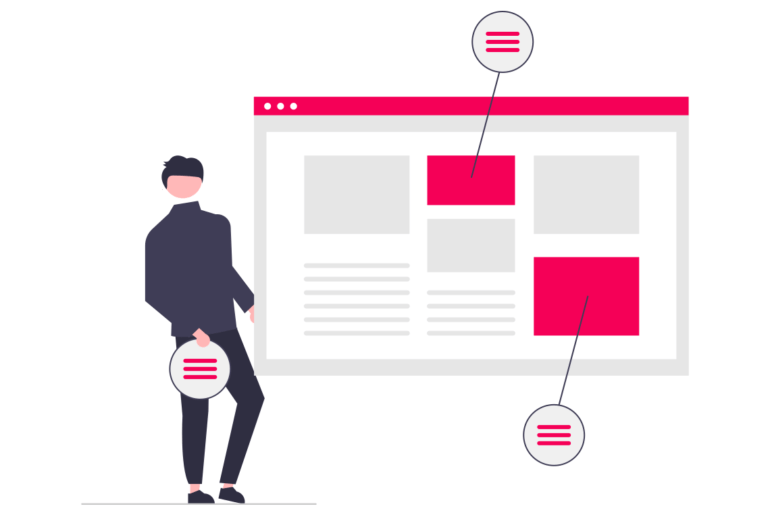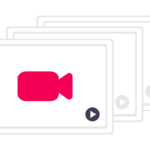The CPM rate has always been crucial among other indicators. Although Adsterra advises focusing on ad income, in particular, CPM is crucial for assessing the effectiveness of your visitors.
We already discussed the main causes of a decline in the cost-per-mille rate, and now it’s time to concentrate on ways to raise CPM.
You will now receive a cheat sheet to use as a reference whenever you want to make sure your website functions properly. This concise guide will make it simpler to determine the key actions you must do to get toward higher ad profits.
Your app must be monetized if you want it to be successful. To make money, you may monetize your app by charging for downloads or subscription services. Your mobile app will never be successful without a monetization plan. Examples of a few apps that effectively leverage app monetization techniques and boost app income are shown.
Everything you need to monetize your app is in this tutorial.
We’ll explain why app monetization is important, its methods, which ones you should pick, and much more.
Also Read: Best App Monetization Platforms for Publishers in 2022 & Beyond
What is App Monetization?
Making money from app users is the process of monetizing an app.
This frequently entails a variety of tactics, including placing banner advertisements at the bottom of your app, using rewarded video adverts, and using integrated advertising techniques, which we’ll go over in more detail below.
Knowing how to monetize apps is essential since there are a variety of methods that app creators and marketers may utilize to make money. A well-thought-out app monetization plan, however, guarantees that you’re focusing on delivering a great user experience in order to keep and expand your user base financially.
Owning KPIs for the average purchase value, an average number of purchases and retention rates is especially important for analyzing a user’s lifetime value (LTV) and a marketer’s ultimate KPI, return on ad spend (ROAS).
People download more than 200 billion smartphone apps annually. Additionally, they spend more than $140 billion on subscriptions and in-app purchases within those applications. About 90% of all mobile internet time is often spent on apps, according to research.
Therefore, it is acceptable to create a mobile app concept and exploit the user base to increase app sales. In order to retain your app income and convert your customers, you must choose an app monetization plan in addition to developing an app.
How can Publishers be Benefitted by App Monetization?
- Revenue Boost
Following the opening of the Apple App Store in 2008, the development of mobile sales began to accelerate at a time when digital advertising as a monetization strategy was already well-established online.
The early adoption of app banner advertisements by app developers necessitated that ads be scaled down to fit the constrained screen space of mobile devices.
Since then, banner advertisements have developed to offer a variety of possibilities tailored exclusively for the mobile environment, including text, video, and native ads.
One of the most common methods for monetizing apps, this income model is still in high demand. According to forecasts, in-app ad sales will nearly treble by 2025 and reach $226 billion.
Also Read: Best Mobile Ad Sizes & Formats For Increased Viewability - eCPM growth
As developers have access to more advanced statistics, app publishers now have unmatched knowledge of user behaviour. In order to overcome banner blindness and reduce user apathy, app developers have started to veer away from traditional in-app advertisements like banner adverts.
Interstitial advertising is among the best in-app ad replacements. Interstitial advertising, which takes up the whole mobile screen and appears at natural transition points in the user flow, differs from banner ads in that they have size constraints and are persistent and invasive.
When best practices are followed, and advertising is put at the conclusion of a flow, for example, in a gaming app, they should display at the end of a level, this mobile app monetization technique performs well.
Interstitial advertising is experiencing rapid eCPM growth, with a 34% rise in US Android smartphones alone between 2020 and 2021.
Also Read: How to Manage Your eCPM Rate Through Seasonality - In-App Purchases
Another monetization strategy that is gaining popularity in the digital environment, notably in the gaming industry, is in-app purchases. For a number of reasons, offering in-app purchases is a terrific option for gaming apps.
Users can use real money to buy features or products in mobile games through in-app purchases.
This might be anything from additional lives or gold to the chance to access levels that were previously locked, depending on the sort of game.
While the ability to make an in-app purchase may be added at any time while playing the game, the wisest approach to do so is to strategically place in-app buy options where customers are most likely to require them.
It’s also quite easy to set up payment for in-app purchases. Users have the option to add a credit card when they create an account on the Google Play store or the iOS App Store to pay for any in-app purchases or other app-related expenses.
If a customer chooses to make an in-app purchase, the transaction is simply charged to their credit card, and app shops take a fee (often 30% unless your mobile app is popular enough to negotiate a different commission structure). - Sponsorship
A sponsorship relationship is one more underutilized yet very advantageous app monetization strategy that is available to publishers. This strategy can be suitable if your mobile app has a sizable user base and high user interaction.
Finding a single business to invest in or sponsor your app and granting them exclusive access to advertise to your user base is the essence of the process.
This may be accomplished by having your sponsor’s logo take up a larger percentage of the app’s interface, by having a splash screen that is visible to app users, or by using push notifications.
Developers should carefully analyze their user base and which goods and services would be the greatest fits for their brand to increase user acquisition before contemplating sponsorship as a means to monetize apps. - Platform Fees
Every paid software download from the Apple App Store and purchases made in-app, of digital services and products are subject to a 30% fee. Developers that make lower than $1 million in sales made in App Store annually may be eligible for Apple’s App Store Small Business Program, which only levies a commission of 15%. Physical goods are not subject to fees. After a year, subscription commissions drop to 15%.
Up to $1 million in sales, the Google Play Store charges a fee of 15% for every app download, which is paid, as well as for in-app purchases of digital products and services. Once the threshold is reached, the rate is raised to 30%.
30% (negotiable) commission on app store purchases is offered by the Galaxy Store.
Amazon App Store: 30% commission on all in-app purchases of digital products and services and paid app downloads. The video app commission is 20%. Developers can receive 10% promotional credits and a 20% commission rate if their annual app store revenue is less than $1 million for Amazon Web Services.
Each app download that is paid and made from the Microsoft Store, as well as the in-app purchases of digital products and services, is subject to a 15% commission. PC game commission is 12%. On Xbox systems, there is a 30% commission on all in-app purchases, games, and applications. To avoid commissions, non-gaming applications can also make use of their very own payment methods.
Conclusion
Despite the fact that 95% of applications may be downloaded for free, the industry as a whole made an astounding $400 billion in revenue that year through various forms of monetization. There are 5 ways to monetize apps: Paid applications, subscriptions, in-app purchases, and hybrid. You may economically keep and increase your user base by developing an app monetization strategy that is user-friendly.
The two monetization methods for mobile apps that are by far the most popular are in-app purchases and advertising. Start by deciding if you want your software to be a paid or free download in order to better understand what advertising model to utilize. To accurately gauge each model’s effectiveness, test many models while measuring KPIs like retention rates and ARPU.
FAQs
The CPM for the telecommunications, general retail, health and beauty, publishing, and entertainment industries are, on average, $1.39, $1.38, $1.00, $1.75, and $0.78, respectively.
CPMs will increase if you have a niche audience or a high-quality website. To increase ad viewability, you can also test and experiment with ad formats and ad placements. Focusing on fill rate is another way to improve revenue.
CPM (cost per thousand) is a paid advertising option where companies pay for every 1,000 impressions received. The term “impression” refers to someone seeing a marketing campaign on social media, the search engines, or another platform.

Shubham is a digital marketer with rich experience working in the advertisement technology industry. He has vast experience in the programmatic industry, driving business strategy and scaling functions including but not limited to growth and marketing, Operations, process optimization, and Sales.




![CTV vs OTT Advertising: Which one is Right Pick for Publishers? + [6 Bonus Strategies] Ott vs Ctv](png/featured-image-270x180.png)


